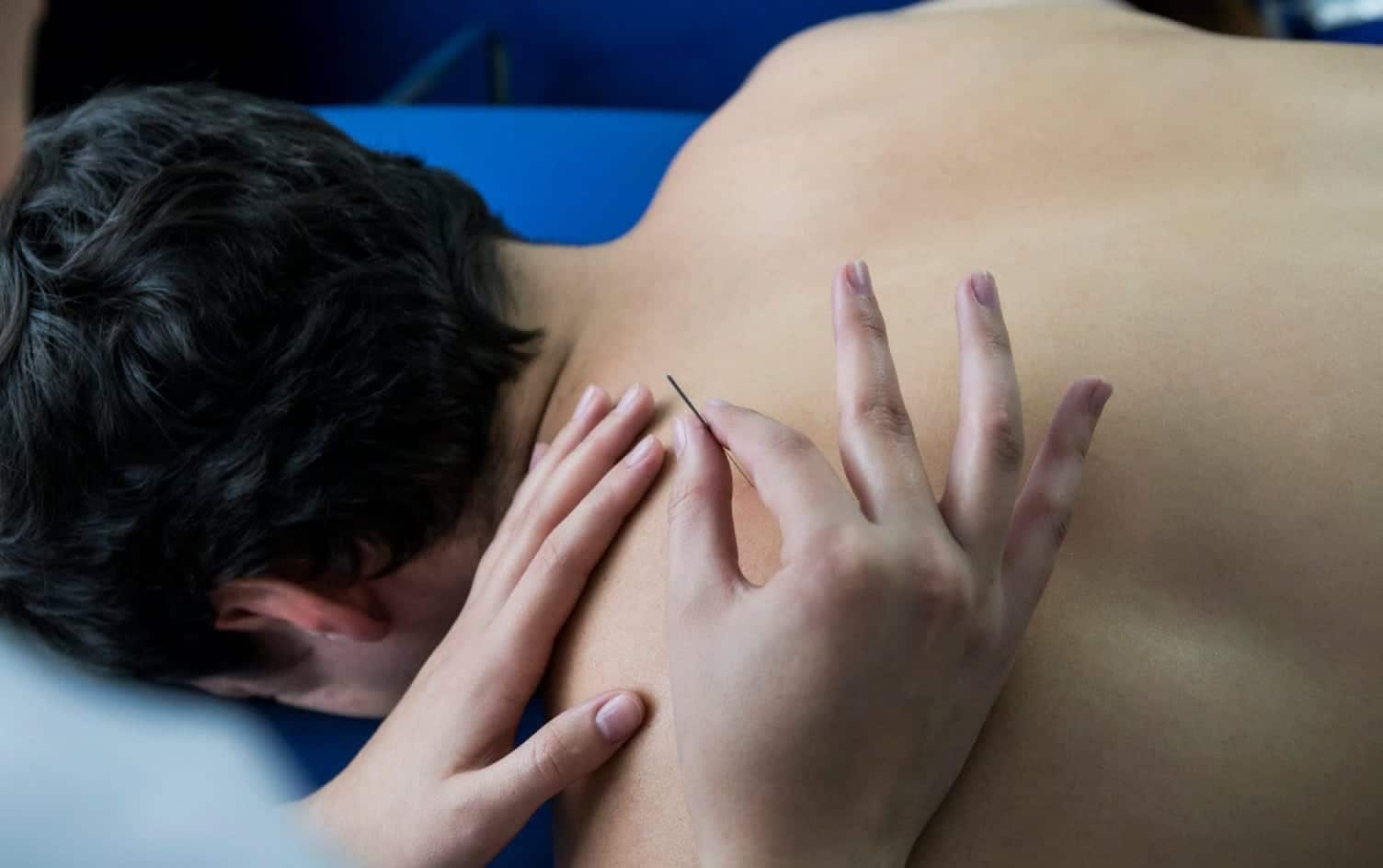At your next physical therapy session, your therapist might suggest dry needling to alleviate muscle pain. The practice is similar to acupuncture: Practitioners insert small needles into the muscle to help release myofascial trigger points.
“During a standard treatment … the patient may feel a twitching response, then the tight muscle may be relaxed immediately,” explains Arthur Yin Fan, PhD, LAc, founder of the McLean Center for Complementary and Alternative Medicine.
Research shows dry needling — also known as intramuscular manual stimulation — has a host of health benefits from alleviating low-back pain to improving spinal mobility from fibromyalgia. A study, published in the International Journal of Sports Therapy, found patients with rotator cuff injuries who received eight weeks of dry needling treatments combined with strength training experienced less pain and better range of motion.
WHY DRY NEEDLE?
Although dry needling can be beneficial, the treatment should be reserved for those who are young, healthy and dealing with minor injuries to the muscles or tendons.
“Dry needling is a very quick and simple treatment to help relax muscles and increase circulation to the area,” says Cristin Gregory, diplomate in Chinese herbology, acupuncturist and founder of Wellbeing Natural Health. “From a Chinese [medicine] perspective it’s a very aggressive treatment that’s not appropriate for everyone.”
Those who are not good candidates for dry needling include older adults or those with weakened immune systems due to stress, trauma or disease, according to Gregory.
Although dry needling is based on the same premise as acupuncture, the two take different approaches — and there is some disagreement about whether the treatments are equally effective.
HOW IT DIFFERS FROM ACUPUNCTURE
Acupuncture is an ancient Chinese practice that uses thin needles to stimulate specific points on the body with the goal of manipulating the flow of energy or qi. It’s used to address a range of conditions from pain and depression to digestive distress. In contrast, dry needling focuses only on pain and injuries of the muscles and fascia. The training for acupuncturists and dry needling practitioners also differs.
As Fan notes, acupuncturists train for up to 3,500 hours and must be licensed; dry needling practitioners, who are often physical therapists and osteopaths, take much shorter courses, some lasting as few as 20 hours, to learn their technique. Dry needling is one of the tools acupuncturists may use in their practice.
The disparities in training led the American Medical Association to adopt a policy that physical therapists and other non-medical doctors practicing dry needling should meet the same standards for training, certification and continuing education that exists for acupuncture. Fan supports the 2016 recommendation, noting, “Dry needling is a form of acupuncture, and for the safety of public, it is strongly suggested that dry needlers should get a formal education in acupuncture.”
For the best results, Gregory advocates a more holistic approach to treatment, explaining, “Chinese medicine is a comprehensive medical system … and it’s easy to take certain treatment techniques out of Chinese medicine (like dry needling) and use them on their own, but their true value lies in being used within the complex system of Chinese medicine … so that the patient can receive the most benefit from them.”




